HTC EVO 3D vs. Motorola Photon 4G: Choosing the Best Sprint Phone
by Anand Lal Shimpi on August 17, 2011 11:11 PM ESTSprint customers almost always get the short end of the stick. In exchange for some of the more reasonable smartphone plans in the US, Sprint customers typically enjoy a mediocre selection of phones. Over the years there have been a few that have stood out. The Palm Pre and EVO 4G both come to mind. But generally speaking, all of the cool phones go elsewhere. In fact, the last Sprint phone we reviewed was the Samsung Epic 4G and that was almost a year ago. Of course more phones have debuted on Sprint since then, they just haven't been all that interesting.
Until now of course.
Today we have Sprint's two flagship Android smartphones: the HTC EVO 3D and the Motorola Photon 4G. Despite naming differences both support Sprint's 4G WiMAX network, have dual-core SoCs and boast 4.3-inch screens, but these two are far more different than you'd expect.
The EVO 3D uses a 1.2GHz Qualcomm Snapdragon S3 (MSM8660) and can capture/display 3D content. Meanwhile the Photon 4G is NVIDIA's debut phone on Sprint, featuring a 1GHz Tegra 2 and a high resolution 8MP rear camera sensor.
Before we get too far down the internal comparison, let's talk about the hardware itself first.
| Sprint EVO 3D vs. Photon 4G | ||||
| EVO 3D | Photon 4G | |||
| Height | 127 mm | 126.9 mm | ||
| Width | 66.0 mm | 66.9 mm | ||
| Depth | 11.9 mm | 12.2 mm | ||
| Weight | 170g | 158g | ||
| SoC | 1.2GHz dual-core Qualcomm Snapdragon S3 MSM8660 | 1GHz dual-core NVIDIA Tegra 2 | ||
| GPU | Qualcomm Adreno 220 | NVIDIA ULP GeForce | ||
| System Memory | 1GB | 1GB | ||
| NAND |
4GB NAND internal 8GB SanDisk class 4 microSD preinstalled |
16GB NAND internal |
||
| Display |
4.3" 3D qHD - 960 x 540 LCD |
4.3" qHD - 960 x 540 RBGW PenTile LCD |
||
| Display Output | HDMI via MHL | microHDMI | ||
| Front Camera | 1.3MP | 0.3MP | ||
| Rear Camera | 2 x 5MP 3D w/ Dual LED Flash | 8MP w/ Dual LED Flash | ||
| Battery | Removable 6.57 Whr | Removable 6.3 Whr | ||
| Shipping Android Version | 2.3.3 | 2.3.4 | ||
| Contract Price | $199 ($549 off-contract) | $199 ($549 off-contract) | ||
The physical comparison boils down to personal preference. The Photon has a lighter and more plasticky feel while the EVO 3D feels more dense and higher quality. Both are awkwardly large thanks to their 4.3" screen size, but the matte and textured finish of the EVO 3D actually does make it easier to hold than the Photon.
Where the Photon starts winning back points is with its kickstand. I've always been a fan of integrated kickstands and the Photon's is no exception. It's convenient for anyone that keeps their phone on a desk, uses it as an alarm clock or watches a lot of movies on it. Although I can't bring myself to spend two hours staring at a smartphone screen (even a large one), I know it's something that people do and the kickstand can be quite useful for those folks. Unfortunately you can't control the angle of the kickstand, so if you're super tall and seated in coach it may not be all that convenient.
Stylistically the EVO 3D takes a more conservative but well received approach, while the Photon tries something new with its long-octagon shape. There's nothing gained by Motorola chopping off the corners of the Photon, it's just different.
The Photon's atypical styling extends to the volume rocker as well. While the power/lock button is fairly standard, the volume rocker is textured with horizontal slits. Button presses are not firm but not mushy either.
The EVO's buttons by comparison are more traditional but extremely low profile. The obvious exception being the massive camera shutter release button, which feels good but not as great as you'd expect. It's also slightly disappointing that unlike on a WP7 device, hitting the camera button doesn't automatically bring the phone out of sleep and drop you into the camera app. If the EVO is unlocked and awake however, the button does just that.
To play up the 3D gimmick make it easier to switch between 2D and 3D shooting modes there's a physical toggle switch on the EVO 3D, next to the shutter release button. You only need the toggle for capture, when playing back content the display automatically switches between 2D and 3D modes.
Pulling off the back cover is far easier on the Photon. The EVO 3D makes you pull a little too much and some of the notches don't seem like they want to let go. Unlike some more recent HTC phones, the EVO 3D doesn't include any antennas in the rear cover - everything is baked into the body of the phone.
Both phones feature a removable battery. The EVO 3D has a 6.57 Wh unit while the Photon 4G's battery weighs in at 6.3 Wh. Behind the battery is a microSD card slot (with an 8GB card) on the EVO 3D. The Photon 4G on the other hand comes with no microSD card installed (but 16GB of NAND on-board) in addition to a SIM card. The Photon 4G includes a Qualcomm MDM6600 that gives it HSPA+/GSM support. The full list of supported networks and frequencies is below:
| Network Support | ||||||
| Total System Power | WiMAX | CDMA | WCDMA | GSM | ||
| HTC EVO 3D | 2.5 - 2.7GHz | 800/1900MHz | N/A | N/A | ||
| Motorola Photon 4G | 2.5GHz | 800/1900MHz | 850/1900/2100MHz | 850/900/1800/1900MHz | ||
If you're in need of a phone that can be used overseas, the Photon 4G is your only option of these two. The EVO 3D can only work on Sprint's CDMA and WiMAX networks.
The EVO 3D and Photon 4G both support HDMI out but through very different approaches. Motorola uses a standard micro HDMI connector, while HTC uses a MHL USB connector. When used with a standard USB cable the MHL USB connector acts like a normal micro USB port for charging and data transfer. If you've got an MHL to HDMI cable however you can get HDMI out of the phone. Unfortunately neither company ships their phone with the appropriate cable to get video output. With the right cable both phones support mirroring over HDMI.















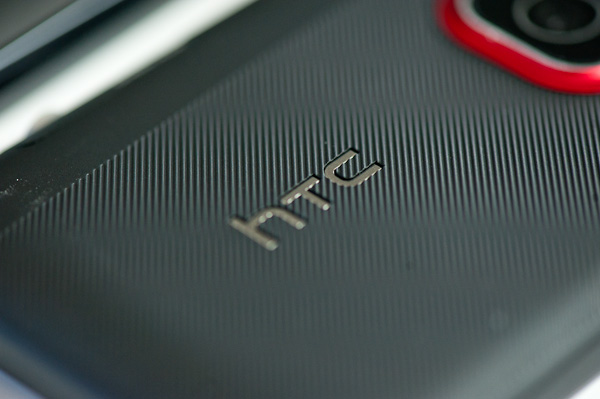
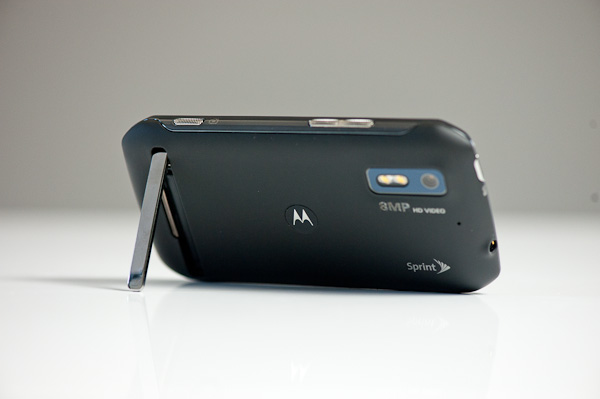
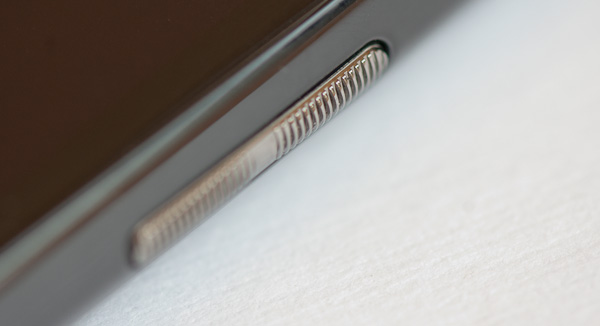
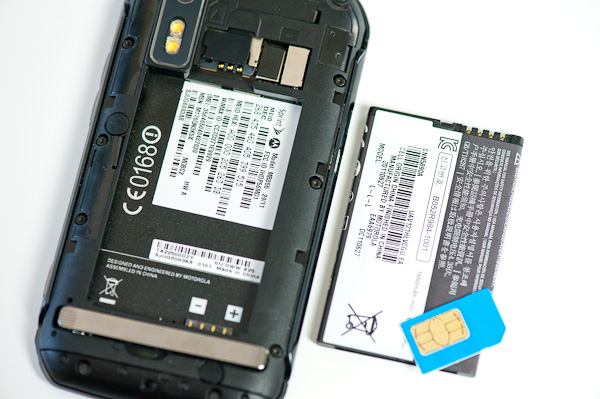
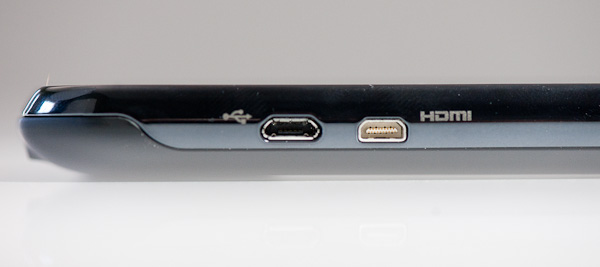








43 Comments
View All Comments
RaLX - Wednesday, August 17, 2011 - link
Pentile RGBW blows and it's worse than Pentile AMOLED because at least the latter has great contrast and colors...Are yellows in Photon as bad as in Atrix where they look like brown tinted and uncalibrated?
JayQ330 - Saturday, August 27, 2011 - link
you havent seen the photon's screen its not the same atrix or droid x2 screen you might of seen or read of, how about you read another review from engadget, *everyone knows engadget is biased & only love the iphone, but even they couldnt deny the photons great specs* the plastic feel of the photon? the photon is the most solid, high quality & very detailed android phones released. read other reviews than this one , this is the only review where they said nothing good of the photon. quadrant scores of 2900 to 3100 * those are my scores * most websites report 2900 to 3000 & thats witch a qHD screen! also its only a 1ghz dual core saving much battery & its rgbw pixels save more than 40% battery than average lcd & more than 70% compared to amoled plus. another thing about the screen it seems to be a newer version of samsungs rgbw pentile tech *yes samsung makes that screen* because its not pixelated, no ghosting effect & the colors are better than super lcd while its contrast & blacks are comparable to super amoled..i owned a galaxy s so i know. even ifag sites reviewed the phone & said that the screen is second only to the retina screen which means allot coming from them. you cant see the pixels especially in blacks thats how good the contrast is & its not a washed out black its ink darkness. besides the resolution & not having a virtual keypad that takes up half the screen space because of its higher res screen which is better for any app that you need to text in & any app period. super lcd is already up there with amoled plus do your research before becoming emotionally attached & being worst than ifan boys. besides the tegra 2 is a better more efficient soc than the exynos want proof? look at all the quadrant & antutu scores they're all overclocked to 1.5 ghz! & a droid x2 with half the ram higher resolution and android 2.2 gets higher scores in antutu in graphics & only 200 less points in quadrant. a and heres a better one the galaxy R with its 1 ghz tegra 2 soc gets 3600 in quadrant while the 1.2 ghz exynos gets a 3400 in quadrant! 200 mhz more & still gets less? i guess the lower resolution screen wasnt enough to beat the galaxy R? seriously like a phone for what it can do not what your emotions tell you to do, that a girls job.Alchemy69 - Wednesday, August 17, 2011 - link
With the Samsung Galaxy S II just around the corner why choose either?IKeelU - Thursday, August 18, 2011 - link
[Im]patiently awaiting Galaxy S II review...anindrew - Thursday, August 18, 2011 - link
Exactly! Samsung is supposed to have a big announcement/press release on August 29th. Considering the image they're using for the event has the Roman Numeral II on it and the fact that Samsung's CEO made a statement about the GS2 being released by the end of August, it seems that the GS2 will be released in the very near future.As a Sprint customer who is eligible for a new phone in October, I'm planning to get the GS2 rather than either of the two phones in this review. I'm looking forward to seeing a review of the GS2 on anandtech, especially if it compares the performance on each network. The phones should be nearly identical hardware-wise.
jnads - Thursday, August 25, 2011 - link
Because Samsung software support blows.The Moment never got Froyo, and got EOL'ed after less than a year. The Intercept got EOL'ed and won't get Gingerbread.
The Galaxy S phones _STILL_ don't have Gingerbread 8 months after it was released.
Do you really want a Galaxy S II, knowing you'll never see Android Ice Cream?
g1011999 - Thursday, August 18, 2011 - link
The two cores share a "512MB" L2 cache but have a dual-channel memory interface.Anand Lal Shimpi - Thursday, August 18, 2011 - link
Fixed! Thank you :)Take care,
Anand
Vishnu NS - Thursday, August 18, 2011 - link
In the second paragraph, on the last line, you have written "the two cores share 512 MB of L2 cache...."A good read as always...!!
jjj - Thursday, August 18, 2011 - link
no WIFI perf or even specs ?